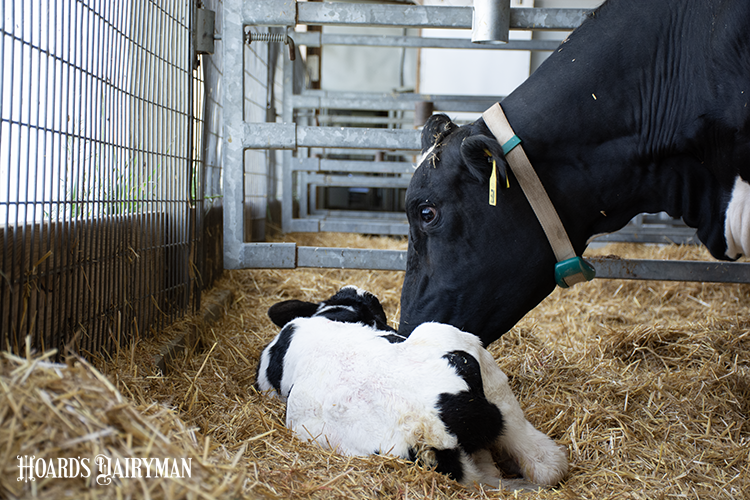
One quick glance is usually all it takes to distinguish the difference between colostrum and milk; the consistency and color of colostrum typically give it away. However, we know that this first secretion from the mammary gland following calving differs from mature milk in more ways than what meets the eye.
During a Cornell University webinar titled “Managing colostrum supply: What farm management and nutritional factors are associated with yield and quality?”, graduate student Trent Westhoff recapped some of the qualities that make colostrum an important tool in enhancing calf health.
He explained that colostrum contains about 76% water, which is less than mature milk. This is largely due to a greater amount of solids. While the fat level in colostrum is 5% to 7%, the bulk of the increase comes from extra protein. Westhoff shared that colostrum contains around 14% protein, which is made up of casein, albumin, and immunoglobulins.
Immunoglobulin G (IgG) is the main one in colostrum, he noted. Although colostrum also contains IgA and IgM, the dairy industry typically uses IgG as a measurement of quality. After a calf is fed, a farm can quantify success of transferring IgG from colostrum to the calf by taking a blood sample.
IgG begins to enter the mammary gland four weeks before calving. The level slowly rises during the prepartum period, up to one week before calving, when there is a rapid induction of IgG into the mammary gland. The IgG level is highest around calving, and then the concentration slowly declines as the cow transitions to mature milk production. The milk made during this period is appropriately called transition milk.
The remaining colostrum contents include minerals, about 1%, and then a smaller fraction of “other” items. This portion includes micronutrients, hormones, immune cells, enzymes, micro-RNA, and much more. Westhoff indicated this is an active area of research as we try to learn more about the importance of these factors.
While we understand the value of colostrum, “There is an opportunity to review colostrum and preweaning practices to continue to improve calf health,” Westhoff said. That’s because nearly 34% of calves become sick during the preweaned period and 5% of calves die prior to weaning, he highlighted, a sign that colostrum protocols have room for improvement.
“Colostrum is an important component in a calf’s life, and it contains many factors beyond IgG,” he emphasized. “If we can harvest high-quality colostrum and provide it to the calf, it sets them up for a good life.”








